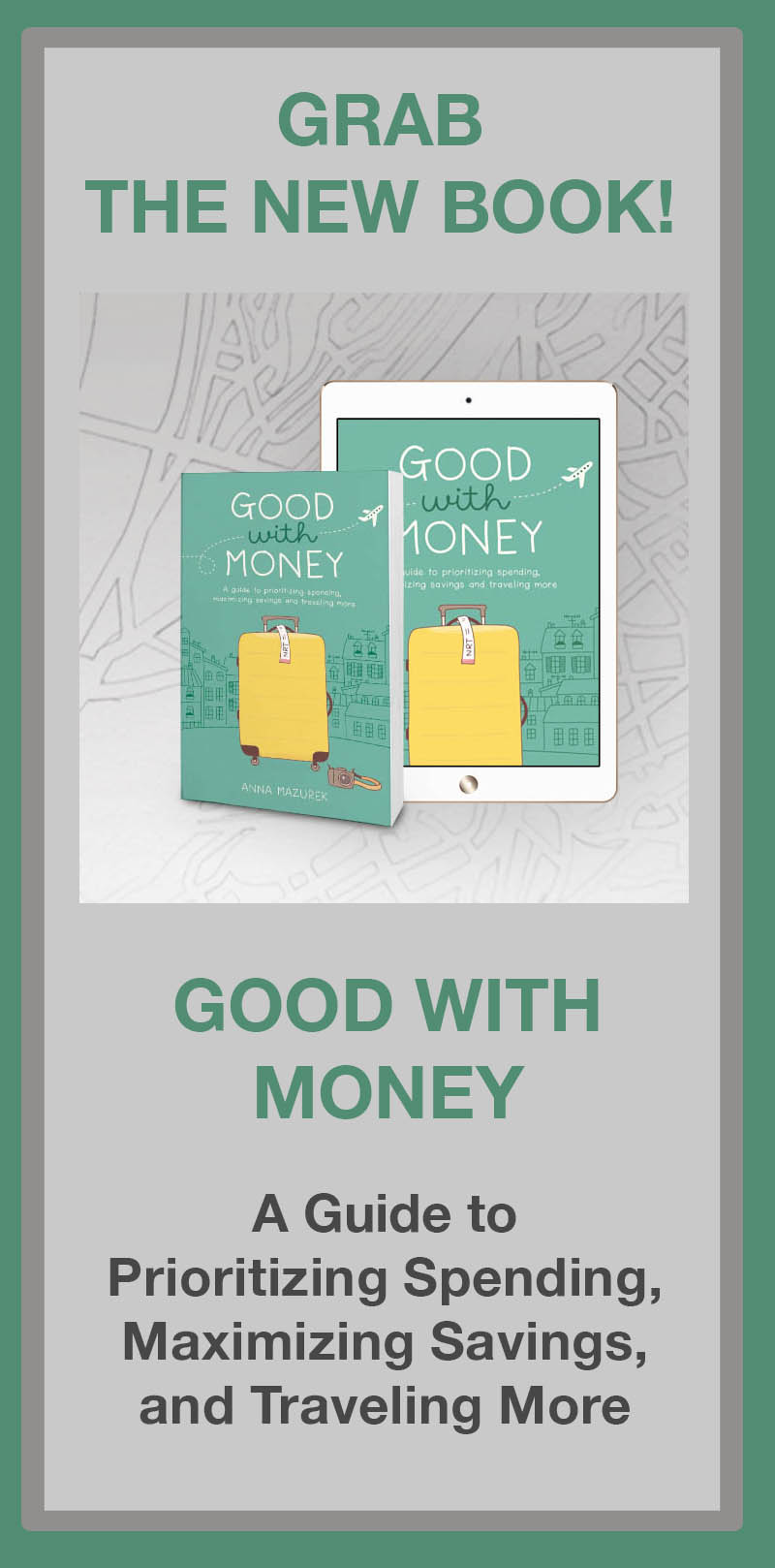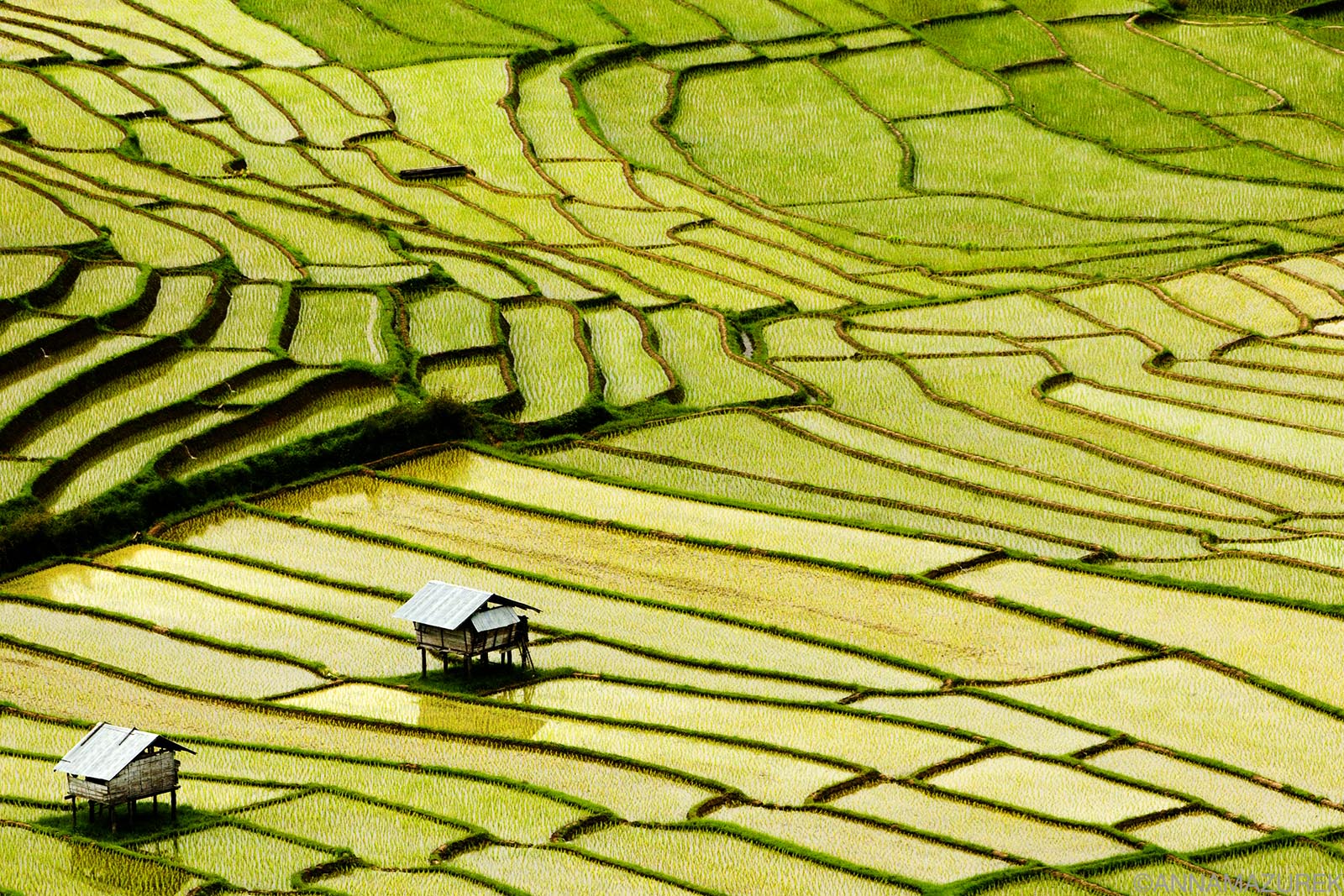 Rice fields during the monsoon season in Bon Mai village in Northern Thailand
Rice fields during the monsoon season in Bon Mai village in Northern Thailand
The hardest part of any trip to Thailand is deciding where to go. The choices are endless – the white sandy beaches of the Andaman Coast, indulging in Chiang Mai’s culinary delights, visiting Bangkok’s gleaming Buddhist temples and biking through the 13th-century ruins of ancient Sukhothai, Thailand’s first capital. You’ll find it hard to leave.
I’ve spent the last decade living and working in Thailand off and on working for travel companies, teaching English and volunteering with an NGO. I now spend every winter living in Chiang Mai. I decided it was time to write up my favorite things to do in Thailand—I’ve been everyone on this list!
Thailand is a traveler’s dream—friendly people, delicious food and stunning scenery. Plus, it’s budget-friendly and very safe. Keep reading for the best things to do in Thailand and how to best prepare for your trip!
Affiliate links are used in this post. If you make a purchase, I earn a small commission at no cost to you, which goes toward the cost of maintaining this blog.
Plan Your Trip
Currency: Thai Baht (THB)
When to Go: November to February for cooler temperatures. October is very lush at the end of rainy season (my favorite month).
Travel Insurance: Protect yourself with SafetyWing travel medical insurance to cover accidents and travel delays.
Mobile eSIM Card: Get seamless connectivity worldwide with Airalo minus the hassle of physical SIM card. (Save 10% with code AIRALOESIM10!)
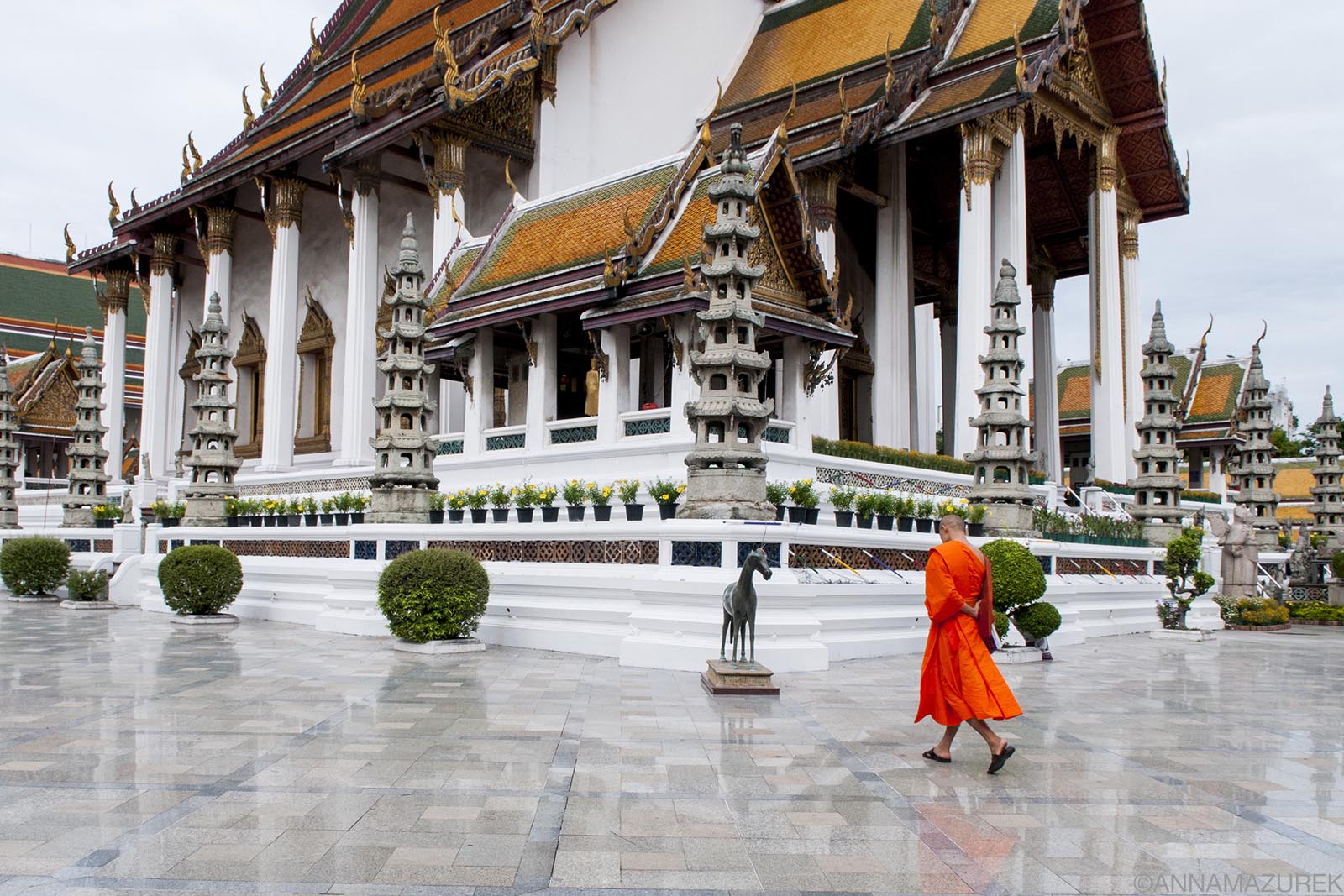 A monk walks through the courtyard of Bangkok’s most stunning temple – Wat Suthat.
A monk walks through the courtyard of Bangkok’s most stunning temple – Wat Suthat.
Bangkok
Bangkok is a kaleidoscope of both Eastern and Western culture – sleek shopping malls just blocks away from traditional Buddhist temples. The capital city boasts a sleek metro train system that makes it easy to get around. Since Thailand is famous for its high-quality medical care, Bangkok is a big hub for medical tourism. I get my annual health checkups in Bangkok and wrote a post with a detailed breakdown of the cost.
The most famous sites are The Grand Palace, the former royal residence, and Wat Phra Kaew, home to the Emerald Buddha, the most revered image in Thailand that dates back to the 13th and 14th centuries. Tickets are 500 baht for foreigners. Consider booking online through Klook if you want to skip the lines. (There is a strict dress code. Cover your knees and wear long sleeves or you’ll be forced to rent clothes.)
Nearby, Wat Pho, known for the reclining Buddha, and the iconic Wat Arun across the river are also a must. (Both are 200 baht each.)
For more things to do in the Thai capital, read my detailed Bangkok Guide!
Where to Stay in Bangkok
Always choose accommodation near one of the train lines to make it easy to get around. I like to stay near the Siam area.
-
Bangkok Hostels: I stayed at Bed Block One Hostel ($16 USD/night) for years and loved how close it was to Siam (Ratchathewi BTS) and the airport train.
-
Bangkok Hotels: The Holiday Inn Express Siam ($88 USD/night) by the National Stadium BTS is my go-to because it’s a great location with clean rooms, free breakfast and a gym. If you want to splurge, I recommend VIE Hotel Bangkok ($188 USD/night).
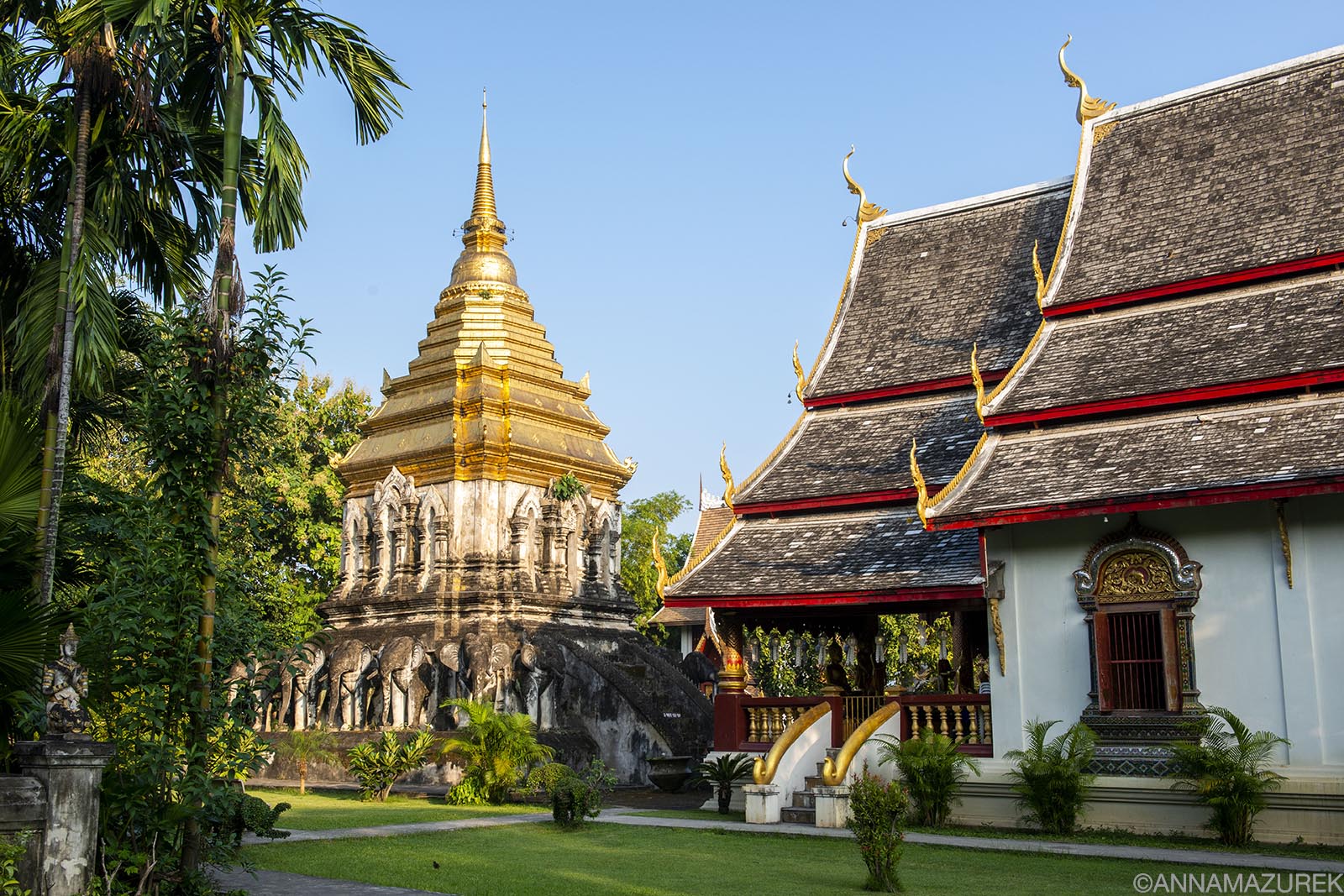 Wat Chiang Man is a hidden temple in Chiang Mai’s old city.
Wat Chiang Man is a hidden temple in Chiang Mai’s old city.
Chiang Mai
Chiang Mai is the laid-back culinary hub of Northern Thailand. Stroll through the old town, a 1.5 km square surrounded by original walls and moat to visit Wat Chedi Luang which dates back to 1441. Climb the 306 steps to the mountain-top temple of Wat Phra That Doi Suthep, which is a short trip outside of the city. Stop by the Chiang Mai Night Bazaar, the 1km long sprawling nightly market for a bowl or two of khao Soi, a delicious soup curry.
For more details, check out my Chiang Mai Guide.
The Best Places to Stay In Chiang Mai
HOTELS: In the popular Nimman area, try Hotel YaYee ($38 USD/night) and Akyra Manor ($138 USD/night), which have the best rooftop bars in town.
HOSTELS: In the Old City, consider The Common Hostel ($10 USD/night) or Pakping Hostel, which has private bunks with curtains. In Nimman, Ray Hostel and Bed Addict Hostel have the best locations and ratings. ($13-14 USD/night.)
Traveling in Southeast Asia
Read my guides to Chiang Mai, Bangkok, Vietnam and Singapore!
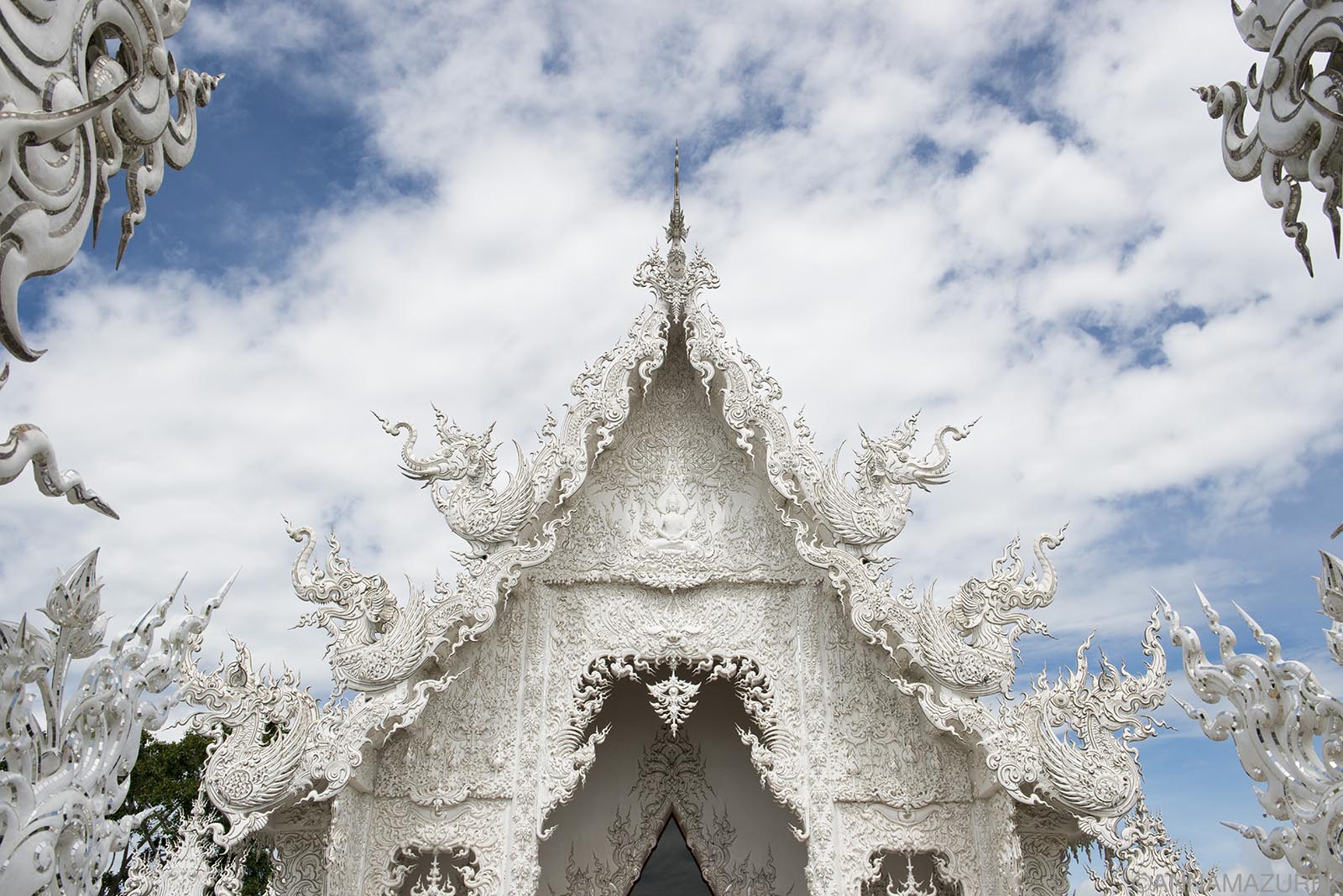 Chiang Rai’s temple-inspired art project, Wat Rong Khun, features images of Hello Kitty and Keanu Reeves in the interior.
Chiang Rai’s temple-inspired art project, Wat Rong Khun, features images of Hello Kitty and Keanu Reeves in the interior.
Chiang Rai
The small town of Chiang Rai is often overlooked but worth a visit if only to see the famous white temple, Wat Rong Khun. The temple is a contemporary art project by local artist Chalermchai Kositpipat that opened in 1997 and is still not yet completed! It’s open daily for visitors with a small entry fee (50 Baht/$1.39 USD).
Another local artist, Thawan Duchanee, is known for a 40-building complex known as the black temple (Baan Dam Museum) that features a dark and controversial interpretation of Buddhist philosophy. There’s also a blue temple, Wat Rong Seur Ten. The city has great food, budget accommodation, stunning temples and is a good base for nearby excursions. The nightly light show at the downtown clock is fun. There are a plethora of day-trip tours from Chaing Mai.
Pai
Everyone loves Pai, a mountain town with beach vibes. The bohemian outpost is surrounded by lush mountain scenery and is one of the most visited parts of Northern Thailand. The city center is filled with trekking agencies, boutiques and an endless array of restaurants. The walking street is hopping at night so stick to the edges of town if you want solitude. Highlights include Pai Canyon, the waterfalls of Pam Bok and Mae Yen, and Tha Pai Hot Spring.
The Best Places to Stay in Pai
For rice field views, consider the quieter Yoma Hotel ($58 USD/night) or Buzzas @ Pai Chan, a backpacker’s spot that’s $26 USD/night. Pai Village Boutique Resort ($160 USD/night) is right on the walking street and super fancy.
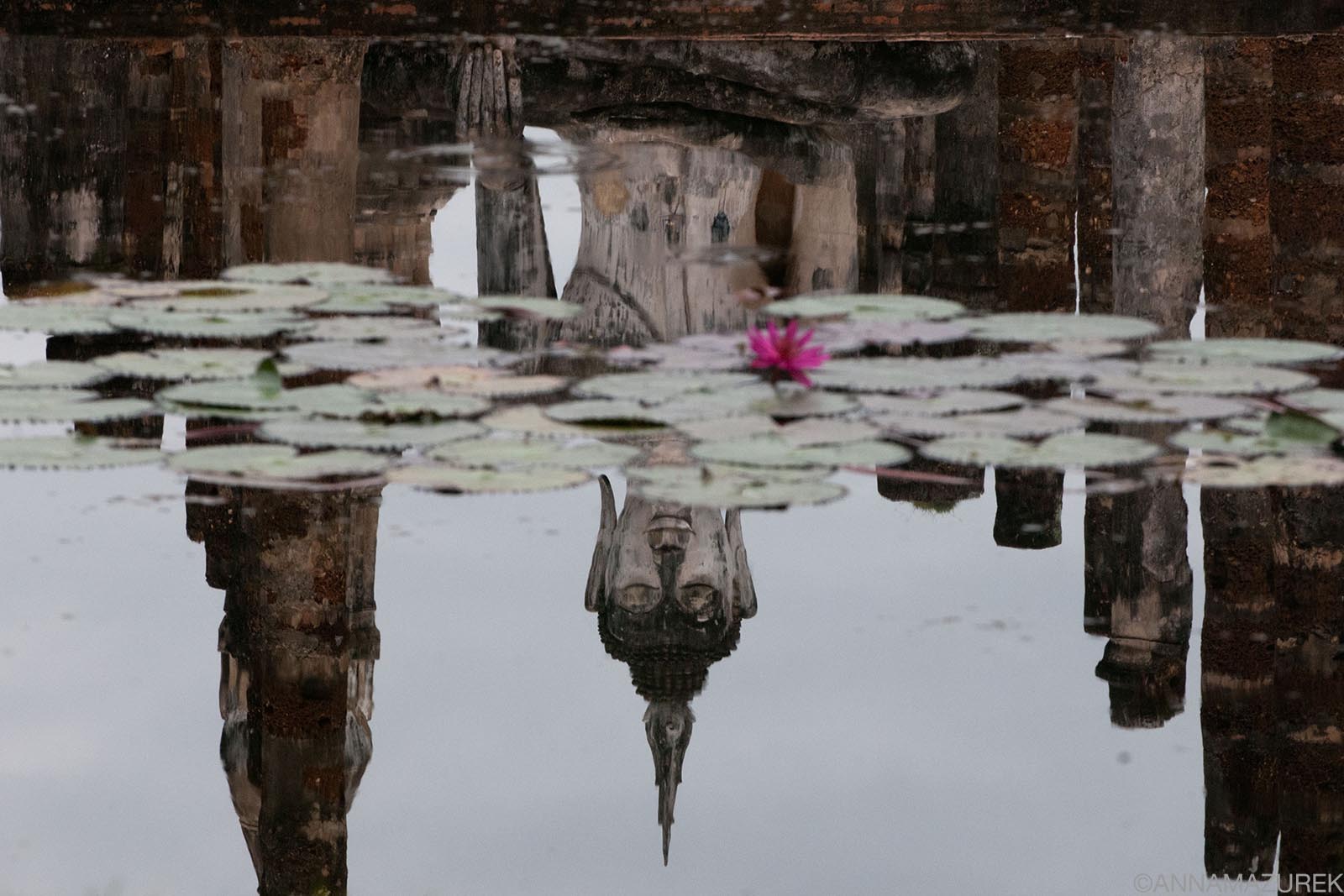 A reflection of Wat Mahathat in Sukhothai, Thailand’s first ancient capital.
A reflection of Wat Mahathat in Sukhothai, Thailand’s first ancient capital.
Sukhothai & Ayutthaya
If you love ancient Buddhist ruins as much as I do, then don’t miss these two UNESCO World Heritage sites. Sukhothai was the first capital of Siam in 13th and 14th centuries, and Ayutthaya was the second. Both are easily accessible by bus.
Sukhothai is over halfway between Chiang Mai and Bangkok. Simply rent a bicycle by the park entrance and explore on your own. (It’s totally flat so easy biking!) Vendors aren’t allowed in the walled portion of the ruins making for peaceful exploration. For details on how to get to the park, check out this post. (On my last visit, I stayed at TR Guesthouse ($14 USD/night for a private room) and really liked it.)
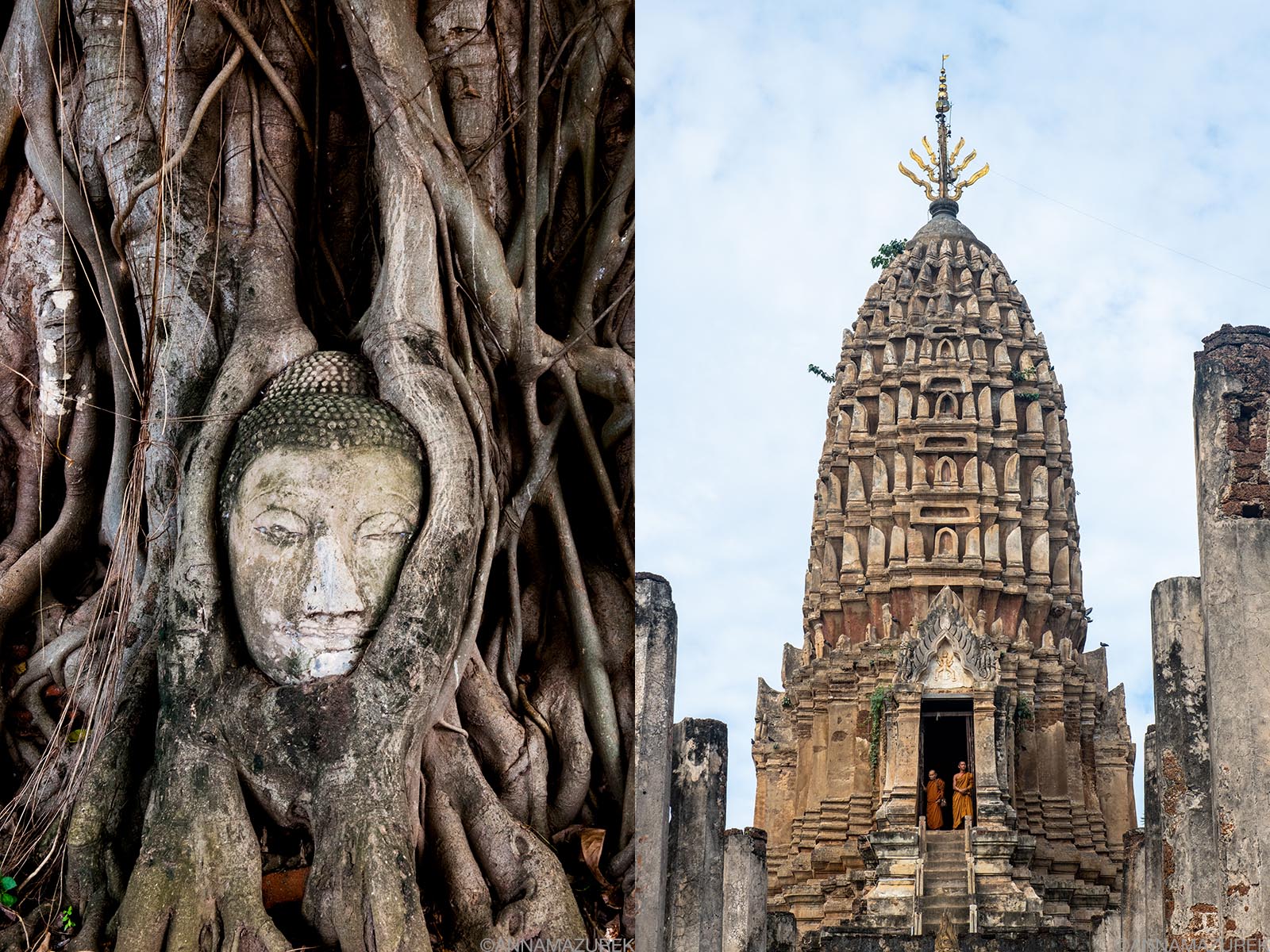 Ayutthaya’s ruins are famous for a Buddha head entangled in tree roots at Wat Mahathat. Right: Wat Phra Sri Rattana Mahathat Rajaworaviharn at Si Satchanalai
Ayutthaya’s ruins are famous for a Buddha head entangled in tree roots at Wat Mahathat. Right: Wat Phra Sri Rattana Mahathat Rajaworaviharn at Si Satchanalai
To get off the beaten path, stay an extra day to visit the nearby Si Satchanalai, one of Thailand’s hidden secrets! It’s 60-kilometer away and part of the same UNESCO designation. (Si Satchanalai was the spiritual capital while Sukhothai was the political head of the first kingdom of Thailand.) Check out my Instagram story highlight about how to visit to Si Satchanalai!
Check out my Instagram highlight about how to visit to Si Satchanalai!
Ayutthaya is 80 miles north of Bangkok and easy to visit on a day tour. Unlike Sukhothai, the sites at Ayutthaya are spread out and has lots of annoying vendors. Doing a tour will make it easy to travel between sights. While both UNESCO sites are worth visiting, I personally prefer Sukhothai because it’s not as crowded, and there are far fewer annoying vendors.
Where to go in Southern Thailand
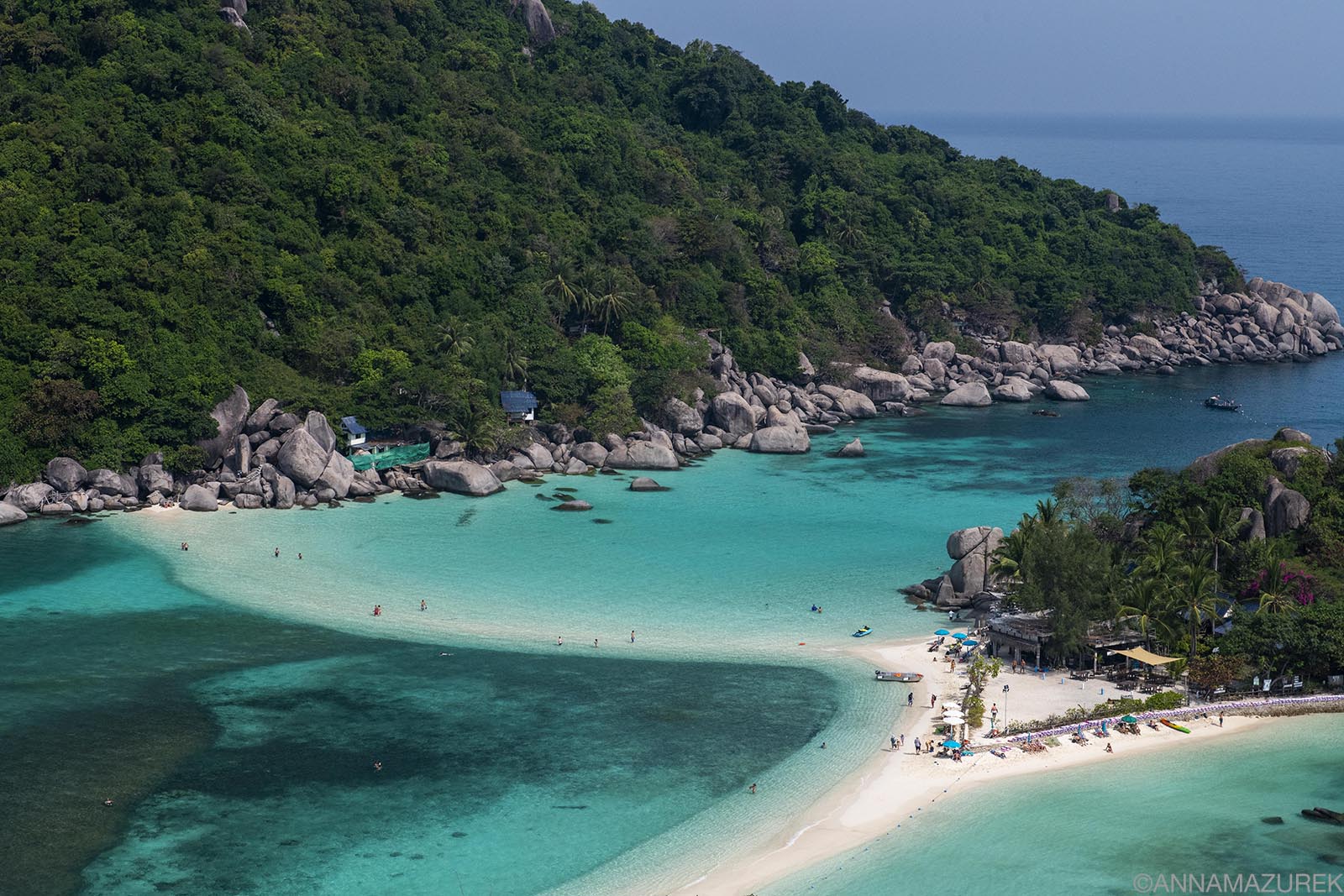 A 20-minute boat ride from Ko Tao takes you to the Koh Nang Yuan Viewpoint.
A 20-minute boat ride from Ko Tao takes you to the Koh Nang Yuan Viewpoint.
The trickiest part of visiting Thailand’s beaches is deciding between the Andaman Coast or the Gulf Islands. The gulf islands of Ko Tao, Ko Samui and Ko Pha-Ngan are close together, while the islands on the Andaman coast are scattered. Both have white sandy beaches and clear water, but the Andaman Coast is known for towering limestone cliffs. (The water is clearer on the gulf side but there’s sea life on the west coast.)
To be brutally honest, I’m not the biggest fan of the Thai islands—I’ve been to them all—because they are all built-up tourist attractions that don’t feel like Thailand. Avoid the rainy season because beaches will be filled with trash and debris, including plastic. This is an issue on most beaches in Southeast Asia.
Thailand’s Gulf Coast Islands
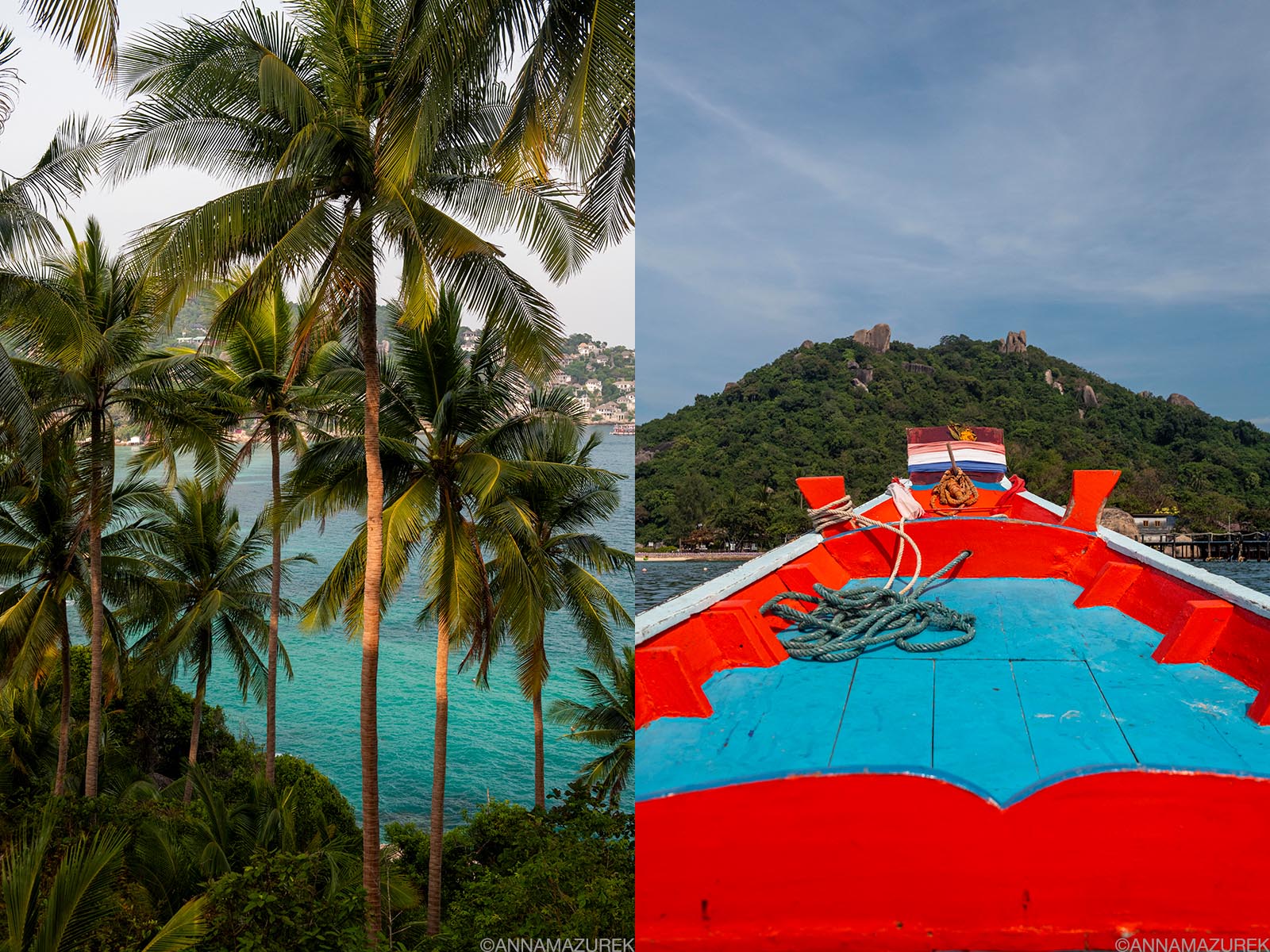 Left: The trail on the way to the John-Suwan Viewpoint; Right: Boat ride to Koh Nang Yuan.
Left: The trail on the way to the John-Suwan Viewpoint; Right: Boat ride to Koh Nang Yuan.
- Ko Tao is a diving mecca of Thailand and second in the world for the annual number of dive certifications. It’s also one of the cheapest places to be PADI certified. If you want to dive, there’s no better place in Thailand. (I stayed at Sairee Cottage Resort on my last visit and would recommend it.)
- Ko Samui is a swanky resort island of the trio and probably the nicest island in Thailand with the cleanest beaches due to the amount of high-end resorts. All taxis are fixed rate, so it’s expensive to get around. Songthaews, pickup trucks with covered rows of seats, are the cheapest options. If you’re flying in and going straight to the ferry to one of the other islands, book a group airport transfer with your ferry ticket.
- Ko Pha-Ngan is the infamous party island known for the Full Moon Parties, a never-ending beach rave filled with electronic music and backpackers covered in neon paint. The party rages on both before and after the full moon. To escape the party scene, head to the laid-back and less visited northern parts of the island.
-
Ko Samet’s ferry dock is only three-hour bus ride from Bangkok’s eastern bus terminal. Despite being the closest island to Bangkok, it’s still an underdeveloped destination with a thick jungle interior. I spent my birthday here one year and really enjoyed it. The southern portion of the island is more secluded and parts of the island only accessible by motorcycle or ATV, which are easy to rent. There are no white sandy beaches here, but the water is still clear.
How to get to Ko Samui, Ko Tao and Ko Pha-Ngan
You can fly to Ko Samui from Bangkok easily from Bangkok or internationally. (The airport is privately owned by Bangkok Airways and is one of the coolest airports I’ve ever visited.) Then, it’s easy to take a ferry to the other islands.
The cheapest way to get there is a bus/ferry combination from Bangkok’s southern bus terminal. You can also take the train/bus/ferry combination from Bangkok, but the bus/ferry option is much easier from my experience.
Thailand’s West Coast Islands on the Andaman Sea
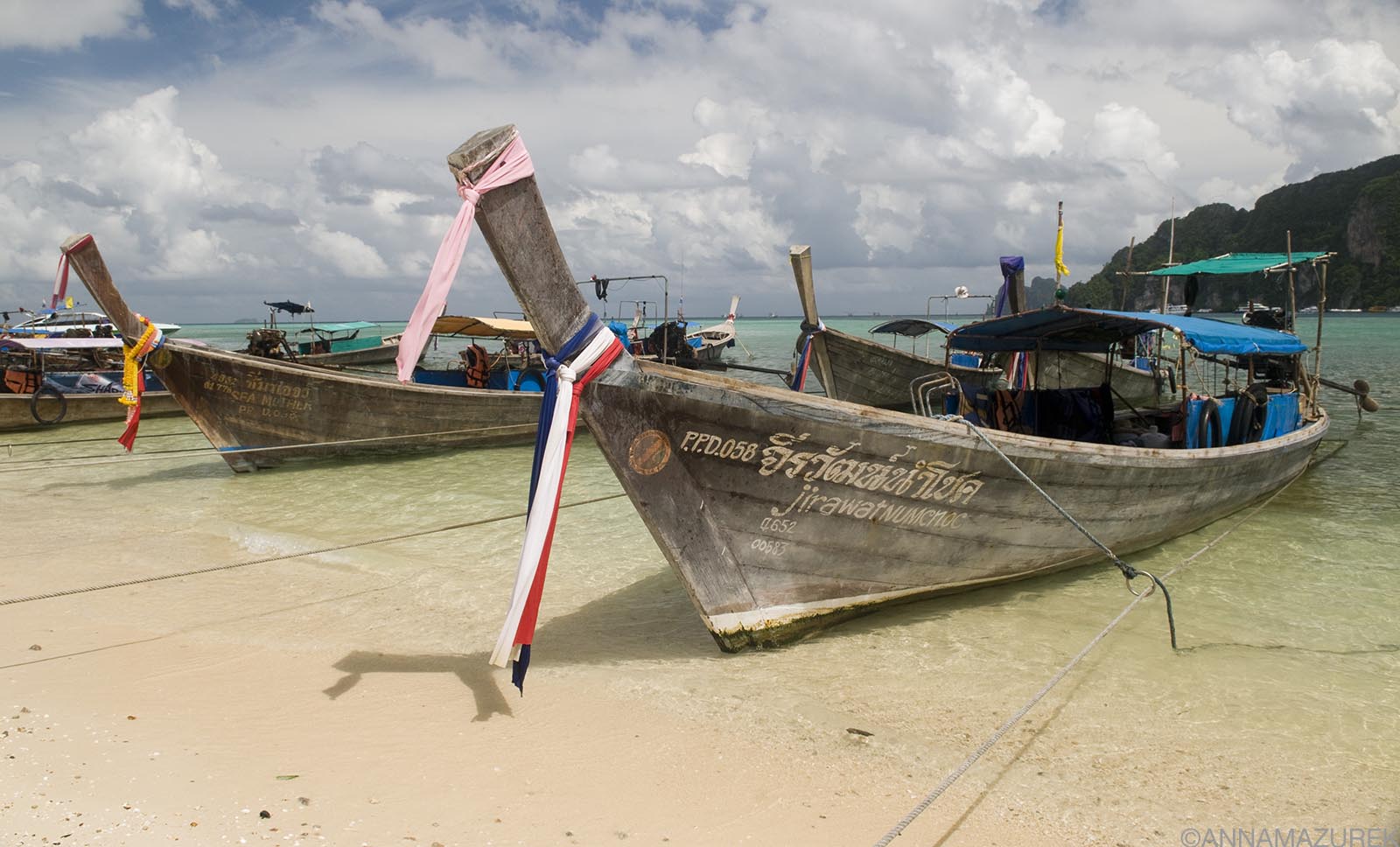 Long-tail boats docked on the sandy shores of Ko Phi-Phi Don in Southern Thailand’s Andaman Sea.
Long-tail boats docked on the sandy shores of Ko Phi-Phi Don in Southern Thailand’s Andaman Sea.
-
Krabi Town is a key transport hub nestled between towering limestone karsts. Ao Naug and Railay are the nicest beaches nearby. While the town of Ao Naug isn’t the nicest, it’s a great place to grab a boat over to Railay, a tiny picturesque white sandy beach village accessible only by sea.
-
Phuket is the celebrity of Thai islands and the largest island in the country. It’s a sprawling 30 miles long, which means you must decide exactly what part of the island to book accommodation. Transport between the main town and other beaches is pricey. It’s a big luxury destination filled with swanky resorts. I recently stayed at the J.W. Marriott for work, which was nice but more geared to families. Phuket just doesn’t feel like Thailand, so I’m not a fan. It is worth a stroll through Phuket town to see the historic architecture. Phuket, like Krabi, is a good transport hub to other islands.
-
Khao Lak is a small town with a nice beach an hour north of Phuket. Over the past few years, I spent several weeks there volunteering with an NGO, the Foundation for Education and Development. It’s a great location for day trips to the Similan and Surin Islands, Khao Sok and Khao Lak/Lam Ru National Parks. Klook offers day trips to most surrounding islands with free pickup.
-
The Similan Islands Marine National Park is home to the most beautiful beaches in Southeast Asia and one of the prime diving and snorkeling spots. (Ko Bon and Ko Tachai are the best snorkeling and diving areas since they are unaffected by coral bleaching.) Overnight stays were banned in 2018. (Divers can stay on a live-aboard.) The islands are closed annually from May 15 – October 15th each year for environmental reasons. Consider a diving trip or a day snorkeling trip from Phuket and Khao Lak. (I booked day trips to the Similan Islands through Klook, which offer pickups in Phuket, Khao Lak and Krabi.)
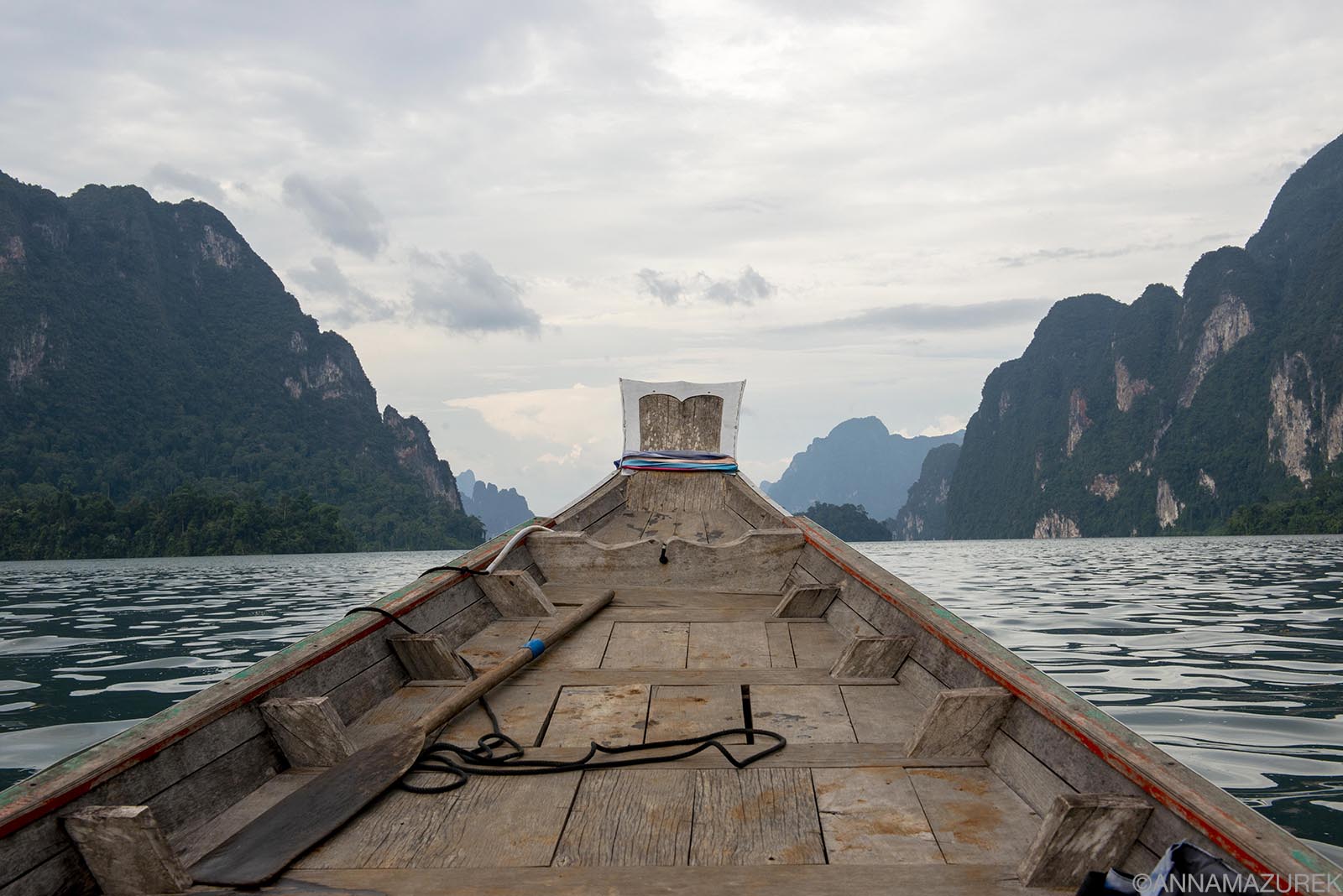 Khao Sok National Park is an easy day from Khao Lak but worth staying for a night or two!
Khao Sok National Park is an easy day from Khao Lak but worth staying for a night or two!
-
Khao Sok National Park is one of Thailand’s hidden gems. The park centers around an inland, man-made lake, Chiaw Lan Lake, with some Ha Long Bay-esque scenery of towering limestone formations surrounded by some of the world’s oldest evergreen rainforest dating back 160 million years.
Go for a jungle trek to see one of the 300 species of birds, a cave tour or a dip in the calm lake waters. Take a day trip from Surat Thani or Khao Lak or stay the night in a fancy lodge or one of the floating raft houses. If you only have time for day trip, consider booking through Klook, which I use for day trips and skip-the-line entry tickets for big attractions.
-
Ko Phi-Phi Don is a backpacker island accessible by ferry from Phuket or Krabi. I was disappointed by the trash on the beaches but loved the nightly fire shows. Its nearby sister island, the uninhabited Ko Phi-Phi Leh, is a gorgeous national park island. You’ll probably recognize the soaring limestone cliffs jutting out of crystal-clear waters from the movie The Beach that was filmed there. It’s a popular day trip with great snorkeling opportunities. Klook offers great day-trip rates from Ko Phi-Phi Don, Krabi and Phuket.
How to get to Phuket and Krabi on Thailand’s West Coast
Phuket is the largest airport with international flights, and Krabi is usually the cheaper option from Bangkok. Phuket is also easily accessible via overnight bus from Bangkok. There is an endless number of ferries between all the islands. Just plan to arrive early to catch a same-day ferry.
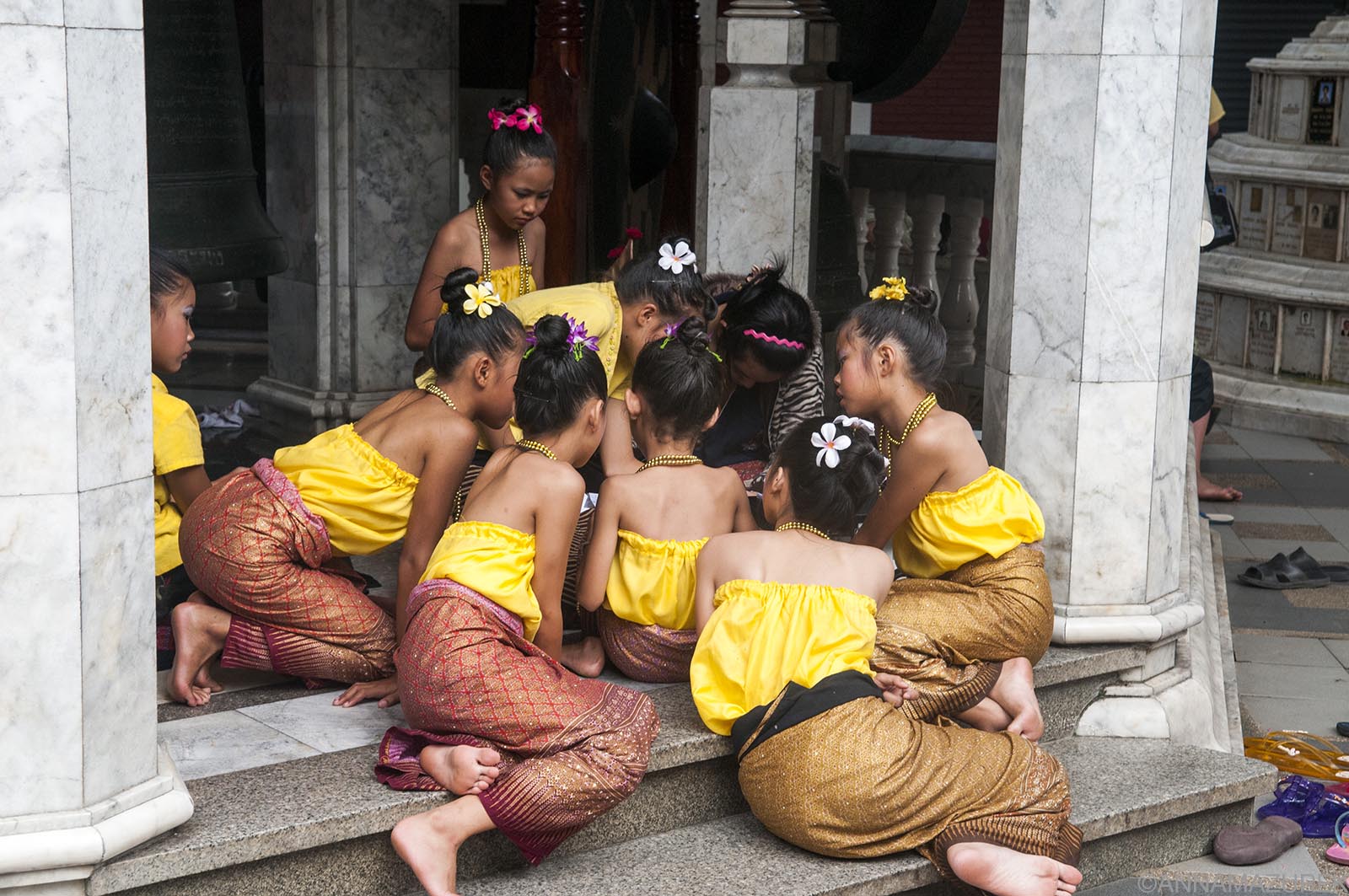 Wat Phra That Doi Suthep, Chiang Mai
Wat Phra That Doi Suthep, Chiang Mai
Thailand FAQ
The Best Time to go to Thailand
It will be hot year-round in Thailand, even in the “cool” season. The rainy season lasts from May to October, but it usually only rains a little each day. The occasional deluge can occur so keep an umbrella handy. (I honestly prefer the rainy season because it’s much greener and lusher.) Avoid the burning season near Chiang Mai in February/March, when the air quality is the worst in the world.
March to May is steaming hot across the country, so avoid this time of year if possible. November through February is peak travel season when temperate drop (low 80’s Fahrenheit in the north), and prices increase dramatically. The water festival (Songkran) in mid-April is another peak travel time so book ahead for accommodation.
Do you need travel medical insurance for Thailand?
Yes, travel medical insurance is one of the most important things to purchase for any trip abroad, especially Thailand. It covers all the things that could go wrong from injuries to travel delays so that you don’t have to worry and can focus on traveling!
I use SafetyWing’s Nomad Insurance, which offers $0 deductible travel medical insurance coverage for over 180 countries for people aged 69 and under when traveling outside their home country. The best part is that it only costs a few dollars a day! If you get sick or injured abroad, you can visit any hospital or doctor.
Other benefits of Nomad Insurance include coverage for lost checked luggage, travel delays over 12 hours, motor accidents (if properly licensed, wearing all safety equipment and not intoxicated) and injuries from sports or leisure activities. You can even add adventure sports, electronics theft and U.S. coverage (for non-residents) to your policy.
If you’re abroad for 90 days, you can get 30 days of home-country coverage. (For the U.S. residents, it’s 15 days.) For more details about my experience using SafetyWing in Southeast Asia, read my SafetyWing Review.
The best place to buy a SIM card in Thailand
The easiest thing to do is buy a Thailand-specific eSIM card from Airalo that will work instantly when you arrive. If you are traveling to multiple countries in Southeast Asia on a short trip, then consider one of their Asia Regional eSIM cards. (Both the country-specific and regional eSIMs have worked wonderfully for me and even have a mobile hotspot option that’s critical for me because I’m always working remotely.) Keep in mind it’s always cheaper to buy a country-specific eSIM than a regional one.
Be sure to join the free Airalo Loyalty Program to earn 5% cash back for every purchase, which can be redeemed on future purchases. For more about eSIM cards, check out this post on the pros and cons of eSIM cards!
If you are staying for a month or more in Thailand, go by an AIS store and buy a local SIM or eSIM card for the cheapest deal. (AIS is Thailand’s largest mobile network operator.)
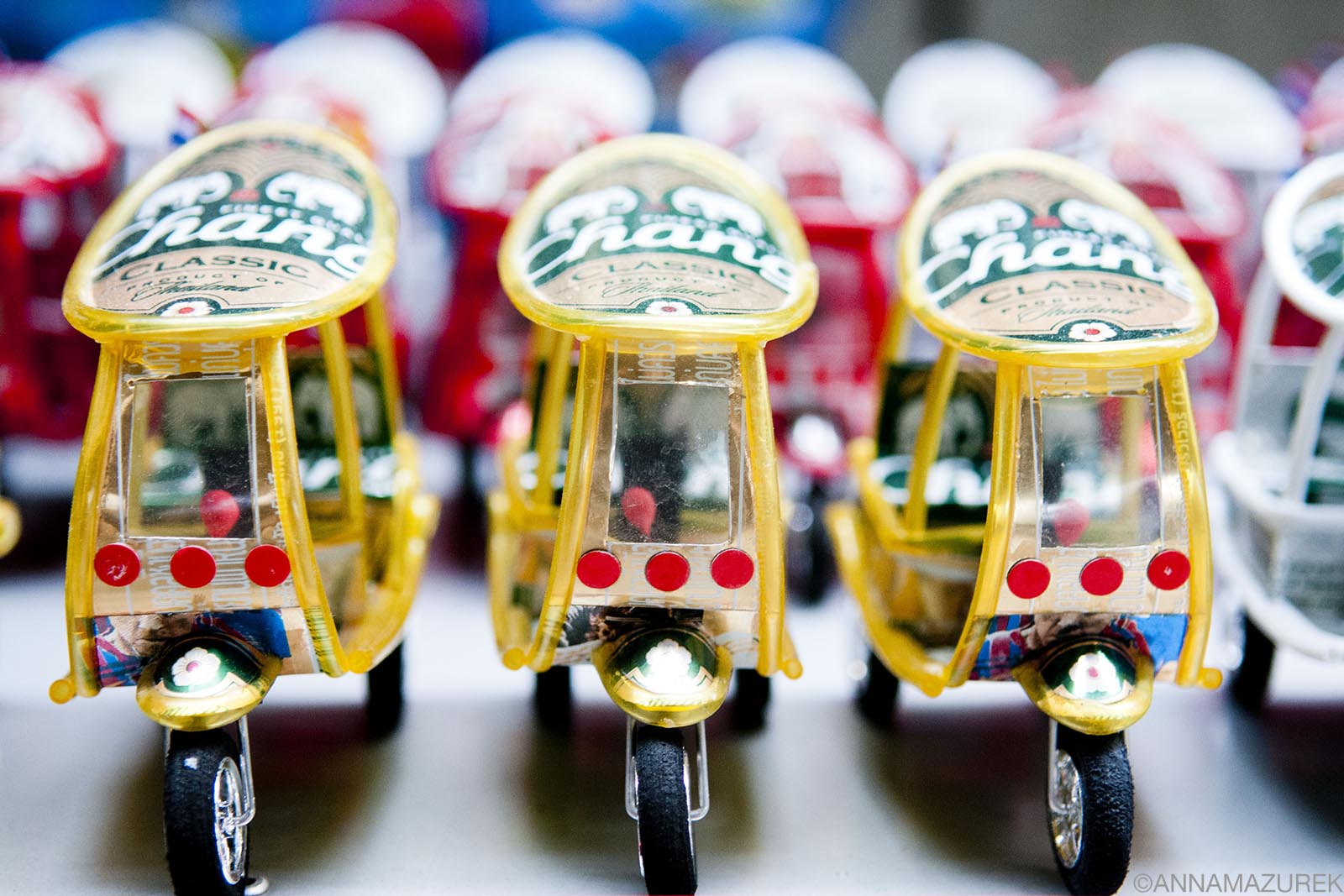 Tuk tuks made from beer cans at a market in Bangkok.
Tuk tuks made from beer cans at a market in Bangkok.
Thailand Transport Tips & Logistics
Trains
The trains in Thailand are good but usually late by at least 30 minutes to a couple of hours. Sleeper trains are quite comfy and one of my favorite forms of travel. (Always get the bottom bunk – it’s bigger. Plus, the air conditioner makes the top bunk FREEZING.) Book directly at the train station. Bottom bunks sell out so try to buy a day or two in advance.
Bus
Buses are more efficient. Always take the second-class buses instead of the VIP tourist buses. It’s half the price and nicer. (The VIP buses are always blaring music all night and can be targets for people to get robbed since it’s all foreigners. I’ve heard rumors of bus staff going through bags when coming from the beaches.) The second-class buses are usually only locals, so they are safer in my opinion. They have air conditioning and bathrooms, too.
Tuk Tuks
Tuk tuks (auto rickshaw) prices are outrageous in Bangkok. Always get a taxi in Bangkok – it’s significantly cheaper to pay by taxi meter than the horrible flat rate tuk tuk prices. They can be cheaper in other parts of the country. Always negotiate a price beforehand.
Grab
Grab is the Uber of Southeast Asia and originally partially owned by Uber. There are other apps as well like Maxim that are slightly cheaper but a bit more glitchy.
Banking
Exchange rates are always better in towns than at the airport. All ATMs in Thailand are now charging ATM fees for withdrawals. To avoid these fees, be sure to open a fee-free travel bank account before your trip, which will save you a significant amount of money. For more details, check out my post on Travel Banking 101.
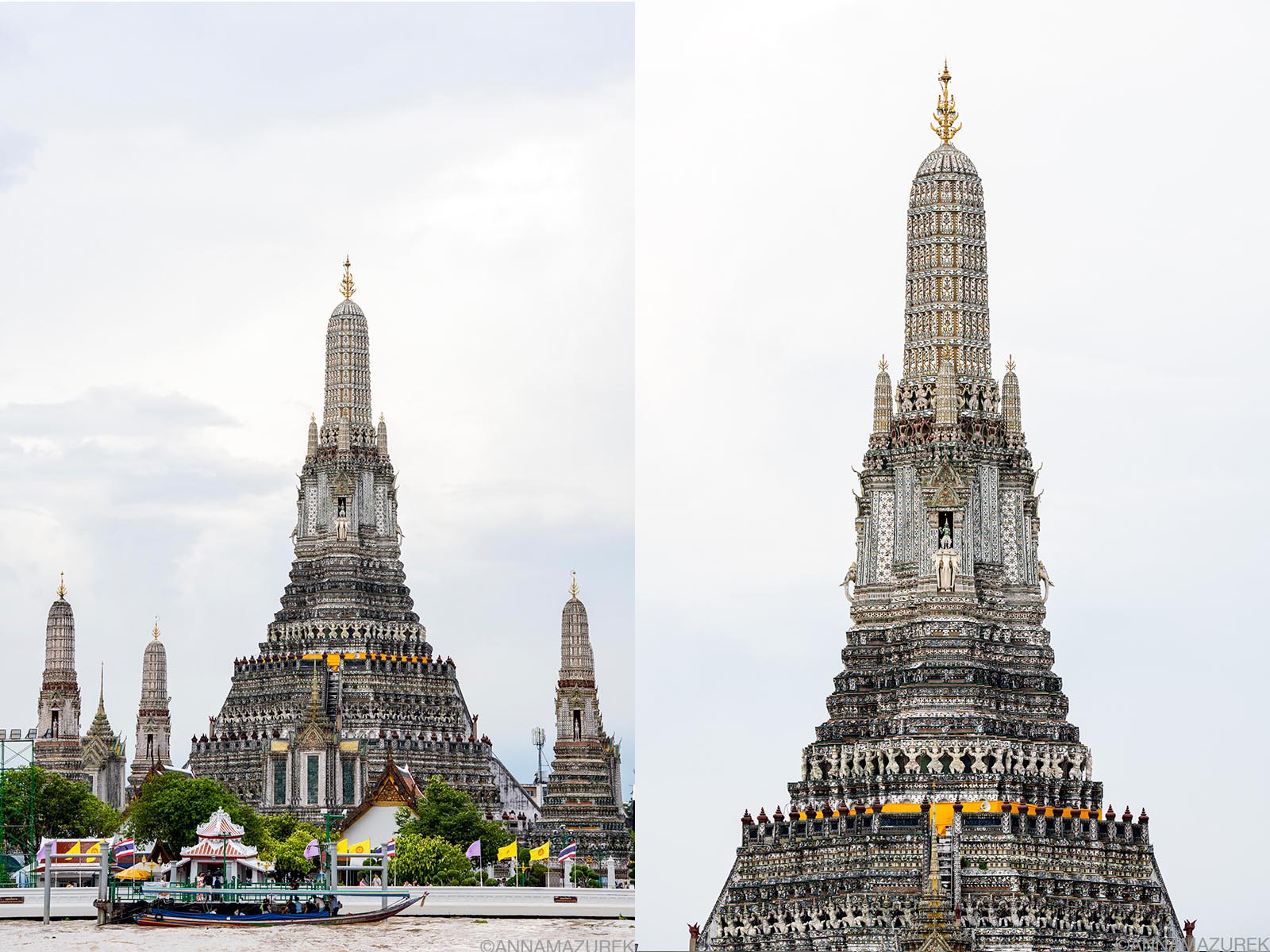 Bangkok’s Wat Arun is best photographed from across the river.
Bangkok’s Wat Arun is best photographed from across the river.
How to Dress in Thailand
Thailand is very conservative so be sure to cover your knees and shoulders in temples! Many temples in Bangkok even require long pants and long sleeves, and they will require you to rent clothing if you are not dressed appropriately. Be respectful at all times. Normal shorts are okay in Bangkok and Chiang Mai. Anything goes along the beaches in Southern Thailand.

